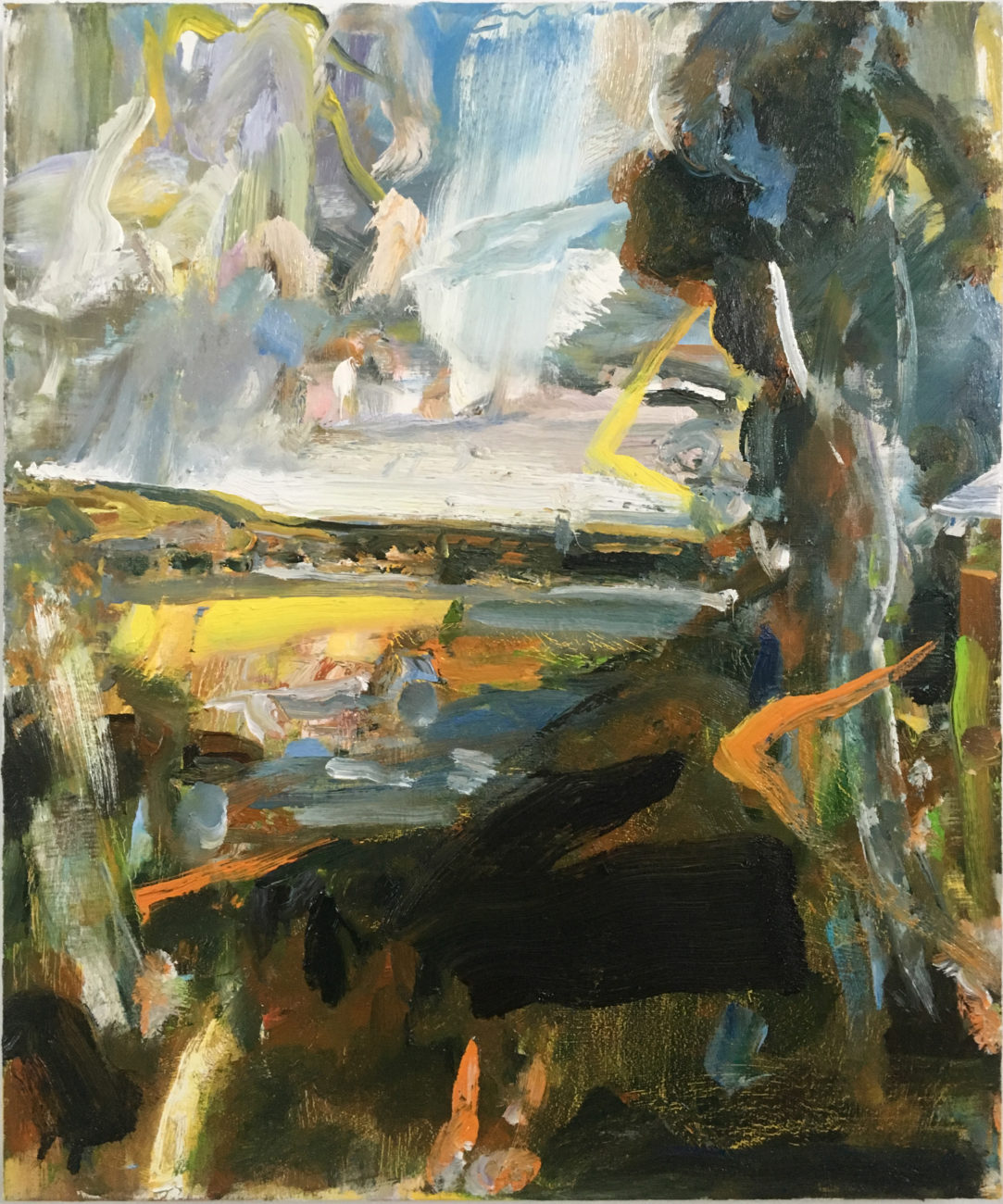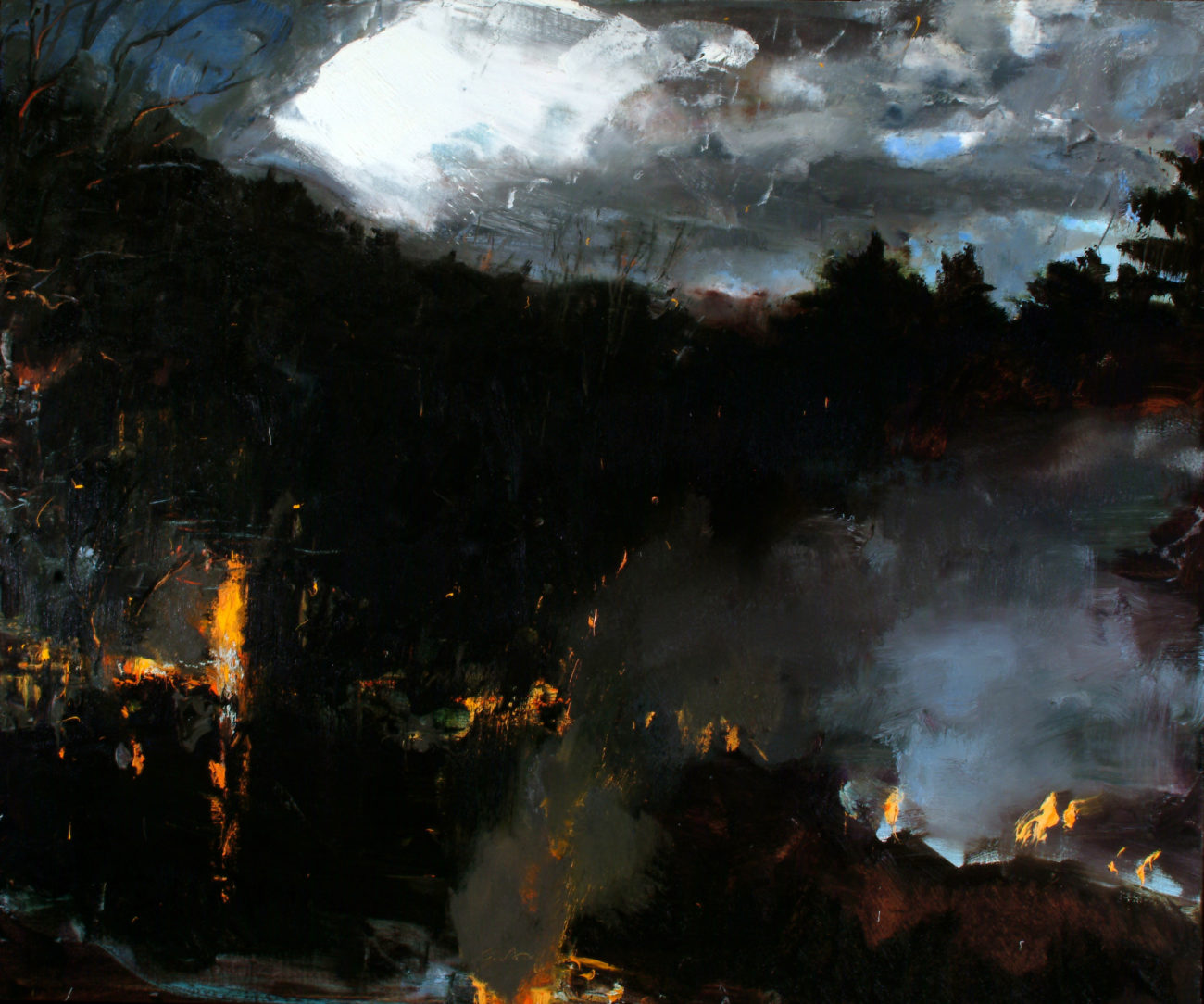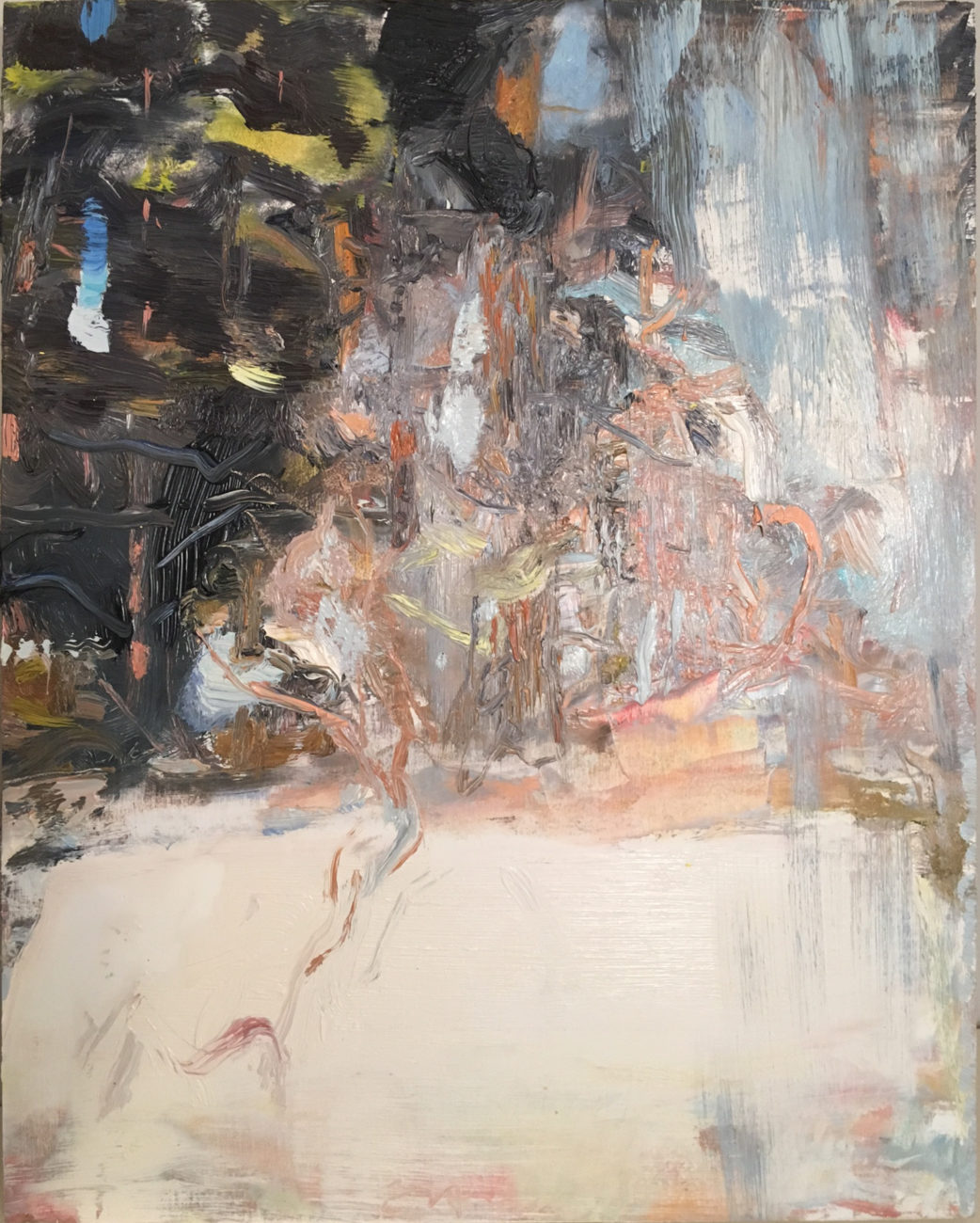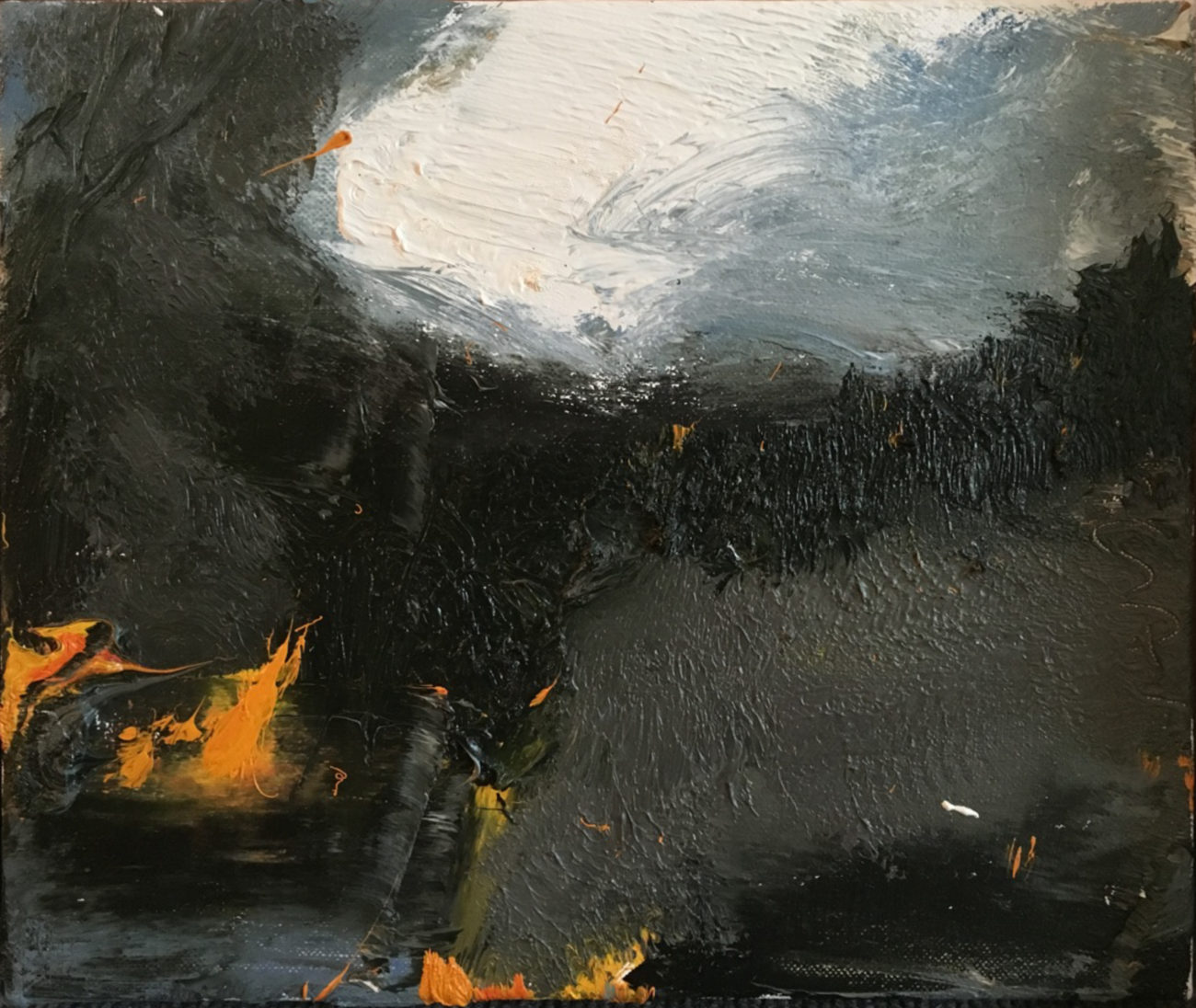Catamount Arts is pleased to announce Eric Aho: Toward A Bright Opening, an exhibition of representational and abstract landscape paintings by internationally recognized artist Eric Aho. Thanks to the support of collectors Gail and Ernst von Metzsch and the NEK Fund of the Vermont Community Foundation, the exhibition will be on view from Wednesday, July 20 through Monday, October 10, 2016. Events and gallery talks in conjunction with Lyndon State College and St. Johnsbury Academy will occur throughout the month of September.
ABOUT THE EXHIBITION: Eric Aho is inspired by the history of art through constant dialogue with painters who have come before. The clouds in John Constable’s The Hay Wain or Vale of Dedham resonate for an artist regularly exposed to dramatic skies near his southern Vermont home, and Rembrandt’s intimate depiction of the Holy Family warmed by fire in Rest on the Flight into Egypt inspired a meditation on the controlled burns of brush he tends each fall. Two Figures Pointing towards a Bright Opening by Goya was catalyst for paintings of coverts or woodland shelters, which then led to a formal exploration of composed space in depictions of Norwegian ice cuts and Vermont ice houses. More recently, Aho has been absorbed in a study of Delacroix’s Lion Hunt, making drawings directly from the 1848 work in Boston’s Museum of Fine Arts, as well as researching numerous versions from Stockholm’s Museum of Fine Arts and other locations.
But Aho goes beyond merely appropriating works of the Old Masters, and instead uses his studies to complete paintings to reflect his personal and contemporary concerns. Goya’s nineteenth-century ink drawing features two people within a nighttime setting pointing to an enigmatic white shape—perhaps a portal or passage—in the center of the picture. Since 2009 this unnamed void has appeared in Aho’s painting as a slab of paint that compositionally obliterates its surroundings. In successive bodies of work, the shape describes a place of escape in a thick forest; an unspeakable depth of cold water beneath an ice cut; and the shadowy, somewhat frightening recess of the old-fashioned icehouse behind his home. For Aho, reoccurring use of Goya’s bright opening becomes a way to explore his own encounters with nature, as well as the history of art and the mysterious act of painting itself.





